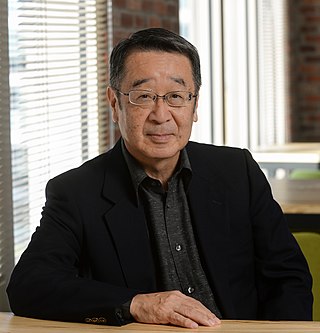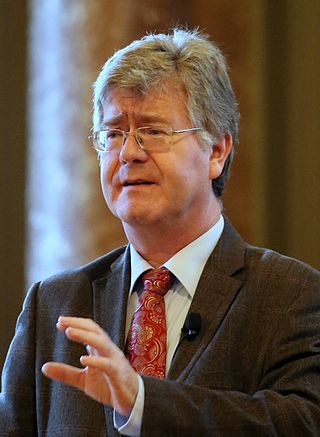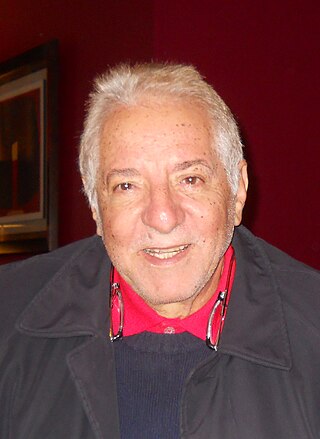Spontaneous emission is the process in which a quantum mechanical system transits from an excited energy state to a lower energy state and emits a quantized amount of energy in the form of a photon. Spontaneous emission is ultimately responsible for most of the light we see all around us; it is so ubiquitous that there are many names given to what is essentially the same process. If atoms are excited by some means other than heating, the spontaneous emission is called luminescence. For example, fireflies are luminescent. And there are different forms of luminescence depending on how excited atoms are produced. If the excitation is effected by the absorption of radiation the spontaneous emission is called fluorescence. Sometimes molecules have a metastable level and continue to fluoresce long after the exciting radiation is turned off; this is called phosphorescence. Figurines that glow in the dark are phosphorescent. Lasers start via spontaneous emission, then during continuous operation work by stimulated emission.
Atomic, molecular, and optical physics (AMO) is the study of matter–matter and light–matter interactions, at the scale of one or a few atoms and energy scales around several electron volts. The three areas are closely interrelated. AMO theory includes classical, semi-classical and quantum treatments. Typically, the theory and applications of emission, absorption, scattering of electromagnetic radiation (light) from excited atoms and molecules, analysis of spectroscopy, generation of lasers and masers, and the optical properties of matter in general, fall into these categories.
Matter waves are a central part of the theory of quantum mechanics, being half of wave–particle duality. At all scales where measurements have been practical, matter exhibits wave-like behavior. For example, a beam of electrons can be diffracted just like a beam of light or a water wave.
Coherence expresses the potential for two waves to interfere. Two monochromatic beams from a single source always interfere. Wave sources are not strictly monochromatic: they may be partly coherent. Beams from different sources are mutually incoherent.
Quantum optics is a branch of atomic, molecular, and optical physics and quantum chemistry dealing with how individual quanta of light, known as photons, interact with atoms and molecules. It includes the study of the particle-like properties of photons. Photons have been used to test many of the counter-intuitive predictions of quantum mechanics, such as entanglement and teleportation, and are a useful resource for quantum information processing.
In physics, superradiance is the radiation enhancement effects in several contexts including quantum mechanics, astrophysics and relativity.

In physics, a trojan wave packet is a wave packet that is nonstationary and nonspreading. It is part of an artificially created system that consists of a nucleus and one or more electron wave packets, and that is highly excited under a continuous electromagnetic field. Its discovery as one of significant contributions to the quantum mechanics was awarded the 2022 Wigner Medal for Iwo Bialynicki-Birula
The timeline of quantum mechanics is a list of key events in the history of quantum mechanics, quantum field theories and quantum chemistry.

David Jeffery Wineland is an American physicist at the Physical Measurement Laboratory of the National Institute of Standards and Technology (NIST). His most notable contributions include the laser cooling of trapped ions and the use of ions for quantum-computing operations. He received the 2012 Nobel Prize in Physics, jointly with Serge Haroche, for "ground-breaking experimental methods that enable measuring and manipulation of individual quantum systems."

Yoshihisa Yamamoto is the director of Physics & Informatics Laboratories, NTT Research, Inc. He is also Professor (Emeritus) at Stanford University and National Institute of Informatics (Tokyo).
Muhammad Suhail Zubairy, HI, SI, FPAS, is a University Distinguished Professor as of 2014 in the Department of Physics and Astronomy at the Texas A&M University and is the inaugural holder of the Munnerlyn-Heep Chair in Quantum Optics.

Robert William Boyd is an American physicist noted for his work in optical physics and especially in nonlinear optics. He is currently the Canada Excellence Research Chair Laureate in Quantum Nonlinear Optics based at the University of Ottawa, professor of physics cross-appointed to the school of electrical engineering and computer science at the University of Ottawa, and professor of optics and professor of physics at the University of Rochester.
Double ionization is a process of formation of doubly charged ions when laser radiation or charged particles like electrons, positrons or heavy ions are exerted on neutral atoms or molecules. Double ionization is usually less probable than single-electron ionization. Two types of double ionization are distinguished: sequential and non-sequential.

Wolfgang P. Schleich is professor of theoretical physics and director of the quantum physics department at the University of Ulm.

In quantum optics, a superradiant phase transition is a phase transition that occurs in a collection of fluorescent emitters, between a state containing few electromagnetic excitations and a superradiant state with many electromagnetic excitations trapped inside the emitters. The superradiant state is made thermodynamically favorable by having strong, coherent interactions between the emitters.
Maciej Lewenstein, is a Polish theoretical physicist, currently an ICREA professor at ICFO – The Institute of Photonic Sciences in Castelldefels near Barcelona. He is an author of over 800 scientific articles and 2 books, and recipient of many international and national prizes. In addition to quantum physics his other passion is music, and jazz in particular. His collection of compact discs and vinyl records includes over 9000 items.

Carlos Ray Stroud, Jr. is an American physicist and educator. Working in the field of quantum optics, Stroud has carried out theoretical and experimental studies in most areas of the field from its beginnings in the late 1960s, studying the fundamentals of the quantum mechanics of atoms and light and their interaction. He has authored over 140 peer-reviewed papers and edited seven books. He is a fellow of the American Physical Society and the Optical Society of America, as well as a Distinguished Traveling Lecturer of the Division of Laser Science of the American Physical Society. In this latter position he travels to smaller colleges giving colloquia and public lectures.

Avraham (Avi) Gover is an Israeli professor of Electrical Engineering in the Physical Electronics Department of the Engineering Faculty at Tel Aviv University, specializing in Quantum Electronics and FEL Physics. Gover is also the head of the Israeli Center for Radiation Sources and Applications in Ariel. In 2005, he was awarded the international FEL prize "in recognition for his outstanding contributions to Free Electron Laser science and technology".
Bruce W. Shore was an American theoretical physicist known for his works in atomic physics and the theory of the interaction of light with matter.

Rodolfo Bonifacio was an Italian physicist, Professor Emeritus at University of Milan, who made significant contributions to laser physics and quantum optics.









